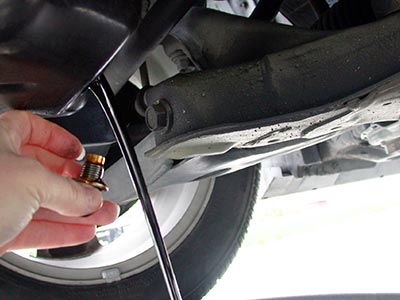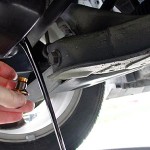When you purchase a vehicle you are taking on the responsibility of servicing and maintaining that vehicle, it is important to ensure your vehicle is safe to be used on-road and off-road to avoid being involved in an accident.
In between services you should be checking your vehicle for anything out of the ordinary and take action upon your findings to avoid catastrophic failures.
Here are our servicing and maintenance tips to help you look after your Toyota;
Maintaining your fluids & oil

- Change your antifreeze at least every two years. Antifreeze costs very little but a new engine costs considerably more; preventing freezing will reduce the possibility of a cracked radiator, or at worst an engine block and the need for expensive replacement. Use quality antifreeze mixed with water and use an antifreeze tester to make sure the mixture will hold to the lowest temperature possible for your area.
- Windscreen washer fluid is held in a reservoir under the bonnet and is easy to get to, the water may freeze and burst the container, so be sure to use a windscreen washer solvent instead.
- Changing your engine oil and oil filter every 3,000 to 5,000 miles can add years of life to your vehicle. Dirty oil reduces MPG by causing unnecessary friction on engine parts. Make sure you change the oil filter every time you change the oil. Check the oil level between changes especially on cars with high mileage. If you let the oil get low you could blow your engine and have to pay serious money for an engine rebuild or at worst a new vehicle.
- Keep all fluid levels topped up, even the fuel tank, this helps reduce moisture problems in the fuel system.
Looking after your tyres
- Check the tread on all your tyres. The legal minimum is 1.6mm although in winter and wet weather the AA recommends a tread of at least 3mm for sufficient grip. The lower the tread, the longer the stopping distance required when wet, so ideally 4x4 tyres should be replaced well before getting to the absolute minimum, especially if that is just before winter.
- Tyre pressures should always be checked regularly, but this time of year makes it all the more important to stick to the recommended tyre pressures normally found in your vehicles handbook or our Vehicle Specification guides. You are responsible to maintain your tyre pressures and must check them regularly.
- Check the tracking regularly as wheels that are out of alignment wear tyres unevenly.
Keep an eye on the cam belt
- Check your service manual or engine bay for a sticker notifying when the cam belt was last replaced and to find out when your car is next due to have its cam belt change. This varies from car to car, but is often needed at around 60,000 depending on the quality of the belt that was fitted previously.
- What should you do when the cam timing belt light comes on? This is simply an indication that you should inspect when the cam belt was last replaced and change if required. It is for guidance only and doesn’t necessarily mean your cam belt is about to fall apart and damage your engine. The light will need to be turned off by resetting the cam belt service interval once the cam belt has been inspected or replaced if required.
- Cam belt replacement can seem expensive but if it fails while you’re driving, you could face serious engine damage that could cost much more to fix than changing it when recommended.
Servicing your brakes
- Replace worn pads, discs or shoes and getting your brakes professionally inspected ensures immediate response in icy or slippery situations. When you are replacing either brake pads, discs or shoes, they must be changed in pairs and never on just one side.
- If you are experiencing air contamination in the hydraulic system, the brake pedal travel will increase and the brakes will become less effective. Air can be bled from the system, via the bleed nipples.
- Brake fluid should be renewed at least every two years. Brake fluid absorbs heat and possesses a high boiling point. Most types attract atmospheric moisture, which makes the fluid more susceptible to boiling.
Check all your lights
- As well as being able to see, being seen is equally important so check all your bulbs; side lights, headlights, brake lights, tail lights and indicators and replace any that do not work immediately.
- Check all your lights, indicators, reflectors and number plates are kept clean and clear
- A cracked light lens is an MOT Failure and should be replaced immediately to avoid taking on any water which can cause damage to your wiring loom.
- Lights MUST be properly adjusted to prevent dazzling other road users. Extra attention needs to be paid to this if the vehicle is heavily loaded
Start your engine first time, every time!
- Once the cold sets in, cold temperature increases the battery workload and can take a toll, car heaters are turned on and the shorter winter days arrive, this means there is more need for lights to be turned on; all drawing valuable power from the battery. According to the AA, car batteries rarely last longer than five years, so if yours is beyond that age you may wish to consider replacing it.
- Ask your local garage to “Drop test” the batteries, this will test the condition of each battery under load and should show any defects in their condition.
- Glow plugs are a major cause of poor starting, especially on those cold morning starts. Have your glow plugs tested or even replaced if they are a few years old, one faulty glow plug in winter will prevent your Toyota Hilux starting.
- In the cold mornings turn your key for 2 or 3 glow plug cycles, this will really get some heat into the engine and aid initial starting and battery load. Remember; If your engine won't turn over immediately leave it at least 30 seconds between attempts or that too will quickly deaden the battery.
Other general service information
- Ensure that your windscreen wipers are capable of doing the job as clear vision is important, especially in inclement weather. Check your blades for wear and tear, and if necessary replace them. Never switch on frozen wiper blades, broken rubbers is one thing, burnt out wiring or motors is another!
- Check all your hoses, particularly heater hoses, these can swell putting excess strain on them when the hot heater water flows through them. Also heater matrixes are prone to leaking this time of year, once again when hot water starts to flow, weakness are shown, usually in the form of a wet carpet or excessive steaming on the screen. Early tests will help having to replace them in mid-winter (not a nice job at the best of times!)
- Never pour hot water onto a cold windscreen, a cracked screen is the last thing you want in the cold. Keep a quality deicer in your Hilux.
All comments are for guidance only and if you are unsure, contact your local technician. Following these few tips should help your Toyota falling victim to some of the more obvious pitfalls throughout the year.
As well as individual service parts RoughTrax also supply Service Kits
